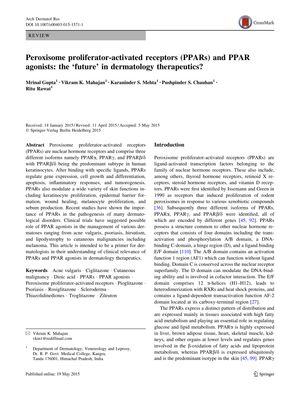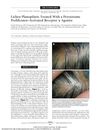Peroxisome Proliferator-Activated Receptors (PPARs) and PPAR Agonists: The Future in Dermatology Therapeutics?
May 2015
in “
Archives of dermatological research
”

TLDR PPAR agonists show promise for skin conditions but need more research before being a main treatment.
The document from 2015 reviews the potential of peroxisome proliferator-activated receptors (PPARs) and their agonists in dermatological therapeutics, highlighting their role in skin functions and the pathogenesis of various skin disorders. PPAR agonists have shown anti-inflammatory effects and potential benefits in conditions like acne vulgaris, psoriasis, hirsutism, lipodystrophy, and cutaneous malignancies. They are involved in processes such as wound healing, sebum production, and hair follicle development. The document also discusses pilot studies and clinical improvements observed with PPAR agonists in conditions like acne, cicatricial alopecia, and cutaneous malignancies. It suggests PPAR agonists could act as tumor suppressors and have anti-fibrotic effects. Despite promising findings, the document emphasizes the need for more research to confirm the efficacy and safety of PPAR activators in dermatology and concludes that current knowledge is insufficient to recommend them as a first-line treatment.



